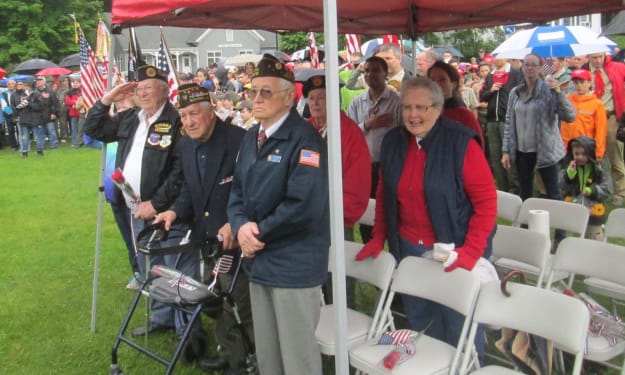Revolutionary War Monument to Remember the Diversity of All Who Sacrificed in Crucial Local Battle
The Battle of Pines Bridge in Yorktown, New York

Picture a monument of a White American officer flanked in battle by an African American enlistee and a Native American sharpshooter, and the commemoration must come no earlier than the Korean War. Therefore, only revisionist history driven by the demands of excessive political correctness could place the scene before that time. So for someone to actually put up the statue would have to be seen as taking the rewrite to a whole other level. That said, Michael Kahn of Yorktown Heights has set such an initiative in motion and hopes to have that very Revolutionary War Monument in place at Downing Park in the near future. Nonetheless, he feels very secure in the historical accuracy and its intent to remember all who served—especially in this area.
"We have a popularly inaccurate perception that it was White guys in red coats versus White guys in blue coats, but the reality was a lot more diverse," said the Yorktown police officer.
Yorktown makes its stand.
The Pines Bridge Monument will commemorate the stand which integrated forces of the Rhode Island Regiment and defended the Pines Bridge on the Croton River on May 14, 1781. "It was a surprise attack by an all American British force known as the refugees or the cowboys," said Kahn.
As innocuous as that may sound in the grand scheme of Revolutionary War heroics, the passageway played a crucial role in the colonists overall strategy. Maintaining control of the Hudson and Croton Rivers enabled the rebellion to keep communication and supply lines open between the North and South.
Given that New York City and its surrounding areas were prone to support of the British, Pines Bridge was always in a precarious position. As a result, he said, "If the British could capture it, they could have gone on to divide and conquer."
Hearts and Minds on Both Sides
Instead, George Washington employed a strategy of prolonged standoff. The father of our country hinged hopes on stalemating the British long enough until they tired of the cause. Of course, success eventually forced the crown to make their final exit at the other Yorktown.
But war weariness brought on by casualties were not just problems the British faced. Shifting sentiments of the all-volunteer American force always had Washington struggling to maintain numbers, and troop decimation eventually reached a critical mass.
As a result, initiatives to recruit among people of mixed heritage emerged. “This was not a popular thing back then—especially in the South. But they went and did it anyway,” said Kahn.
The battle in question began when Colonel John DeLancey of the loyalist forces crossed the Pines Bridge. As such, he attacked the Davenport House, where Colonel Christopher Green headquartered the defense of the area. Depicted in the statue to be, Green was captured and killed. But the patriot forces were still able to draw back the cowboys.
The victory aside, the monument is meant also to mark the early emergence of something our nation continues to strive for. “Everybody served and fought and died equally as Americans. This despite any racial disparities at the time,” he said. “That’s something we want to highlight.”
Monument needed to mark diversity and courage.
The same goes for the all the citizen soldiers who did not have the chance to make their mark on history as a result of the supreme level of sacrifice given. “We tend to forget the 30,000 who died then the thousands who went to live on as politicians and statesmen,” Kahn said.
So while taking a college course on historical preservation, Kahn realized that Yorktown had nothing concrete to point to the pivotal role our area played. At the same time, he was always inspired by Sybil Ludington’s statue in Carmel. “Everyone had a strong sense of their town’s place in history,” Kahn asserted.
Kahn would go on to write the proposal and gained the support of the Yorktown Chamber of Commerce, the town, and the planning department. The powers that be in place, Kahn hopes the statue's realization can someday mean the same thing in Yorktown.
To date, the design was recently selected and accumulating the necessary $300,000 is the last piece. Well on their way, Kahn knows the dollars signs will eventually fall in favor of something much more valuable. “It’s a testament to our heritage, and we want generations down the road to remember what people sacrificed and gave before our time," he said.
A little longer to wait, Kahn will gladly concede the short shelf life of any words for actually having the sentiment set in stone for all time.
To donate: yorktownhistory.org
Author can be reached at [email protected]
About the Creator
Rich Monetti
I am, I write.






Comments
There are no comments for this story
Be the first to respond and start the conversation.